Do you long for the days when you could step out your backdoor into a lush, green oasis? With a raised garden pond, you can bring that dream to life! This article will discuss some of the most important things to consider when creating your own raised garden pond. It will cover everything from what kind of plants to include to how to keep your water clean and healthy. So, read on for some helpful tips and ideas that will turn your backyard into a magical oasis!
What is a Raised Garden Pond?
A raised garden pond is a type of water feature that can be used to enhance the look and feel of any outdoor space. Unlike traditional ponds, these are typically built higher up off the ground, allowing for easier maintenance and more versatility in terms of design. They also make it possible to add aquatic life such as fish or frogs to your backyard oasis.
The installation process is usually fairly straightforward; with some basic tools and materials, you can have your own raised garden pond in no time at all. From there, it’s a matter of adding plants, rocks, and other decorations to complete the look. Not only is this an enjoyable project to take on, but it also provides a great way to bring life into your backyard.
When it comes to maintenance, raised garden ponds are much simpler than traditional options. Since they’re usually located higher up off the ground, they don’t need as much attention when it comes to cleaning or refilling them. Plus, these ponds are typically designed with filters and pumps built-in so that water stays clean and clear without needing manual effort from you [1]!

Garden raised garden pond ideas
Create a makeshift mini pond
One of the easiest and most cost-effective ways to bring a little bit of nature into your home is to create a makeshift mini pond in your garden. A raised garden pond can be built using old plastic barrels or other large containers, filled with water and lined with rocks or aquatic plants. You can add fish, frogs, and insects to create a peaceful habitat for these creatures to thrive in. This is not only an attractive addition to any backyard but also provides much-needed oxygenation for the soil around it.
Go formal with a regency-style pond and fountain
If you’re looking to add a touch of elegance and grandeur to your outdoor space, consider investing in a regency-style garden pond. This type of pond is typically rectangular or oval in shape, with brick walls and a stone floor. It can be further enhanced by the addition of water features such as small fountains, bubbling streams, and even ornamental fish. The tranquil atmosphere created by such a pond makes it an ideal spot for relaxation and contemplation.
A boggy oasis for wildlife
For those who want to do their part in helping out local wildlife, creating a raised garden pond that mimics the conditions found in natural wetlands is an excellent way to attract native species into the area. To create a boggy oasis, fill the pond with nutrient-rich soil and plant aquatic plants that can help absorb excess nutrients. The edges of the pond should be shallow in order to allow amphibians like frogs and salamanders easy access. A shallow depth also helps keep water temperatures more consistent throughout the year, which is beneficial to both wildlife and plants.
A swimming paradise for fish
If you’re looking for a larger body of water in your garden, then a raised garden pond may be just what you need. These ponds are typically large enough to accommodate fish such as goldfish, koi carp, or even larger species like trout. Be sure to provide plenty of room around the edges for swimming and hiding places within the water. To ensure that your fish stay healthy, it’s important to test the water regularly and provide appropriate filtration systems.
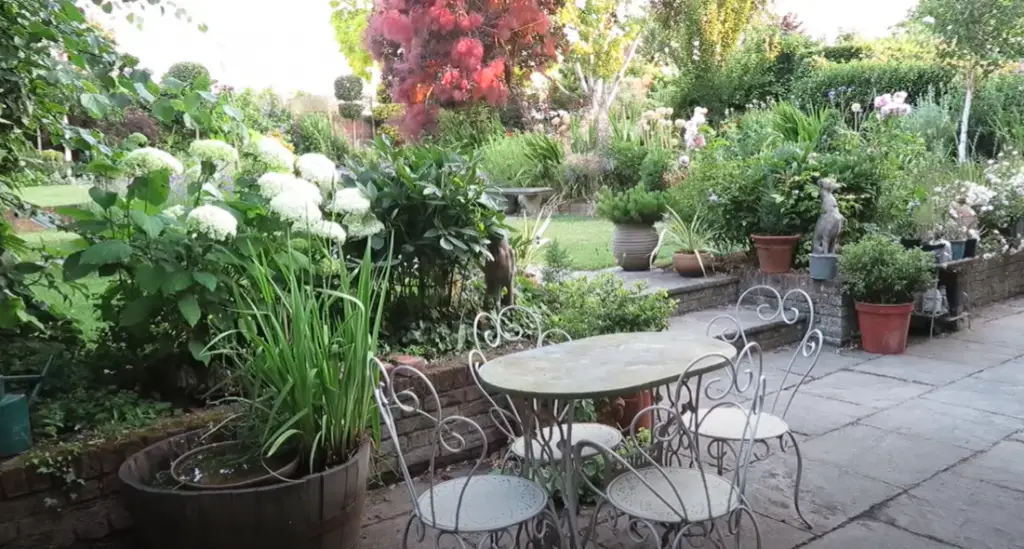
Use rainwater for a sustainable pond
Government initiatives are encouraging everyone to use rainwater collected from their roofs as an alternative source of water for their gardens. This is not only eco-friendly but also helps reduce your water bills. To make the most of this resource, create a raised garden pond that collects and stores rainwater. The depths of these ponds should be kept shallow (around 1 foot) in order to allow evaporation to occur easily. Planting aquatic vegetation around the edges will help keep the water clean by absorbing any excess nutrients.
Plant around the edge of a natural pond
If you are lucky enough to have a naturally formed pond in your garden, then you can use this as the basis for creating a delightful water feature. Planting around the edge of such a pond will give it an instant boost of color and texture. Choose plants that thrive in wet soil such as marsh marigolds, irises, and lilies to create an attractive border. Ornamental grasses make excellent additions too, providing shelter for fish and other wildlife.
Create a pond walkway with stepping stones
Stepping stones are a great way to add visual interest to any pond. You can use them to create a winding path that leads visitors around the edge of the pond, allowing them to admire its beauty from various angles. Be sure to choose stones in varying sizes and shapes for maximum effect. Planting low-growing flowers or grasses between each stone will help create an inviting walkway for visitors.
Add a modern water feature
If you want to add a modern touch to your garden, why not install a contemporary water feature? These can range from small sculptures that spray jets of water into the air to larger pieces such as cascading fountains or even mini-waterfalls. Whichever option you choose, make sure it is designed with safety in mind and positioned away from any power points.
Light it up
To create a magical atmosphere in your garden at night, use underwater lighting to illuminate your raised garden pond. This will ensure that the pond is visible even after dark and can be used as a focal point for entertaining guests or simply enjoying an evening stroll around the garden. Choose lights with a low voltage rating to ensure safety and install them in strategic locations for maximum effect [2].
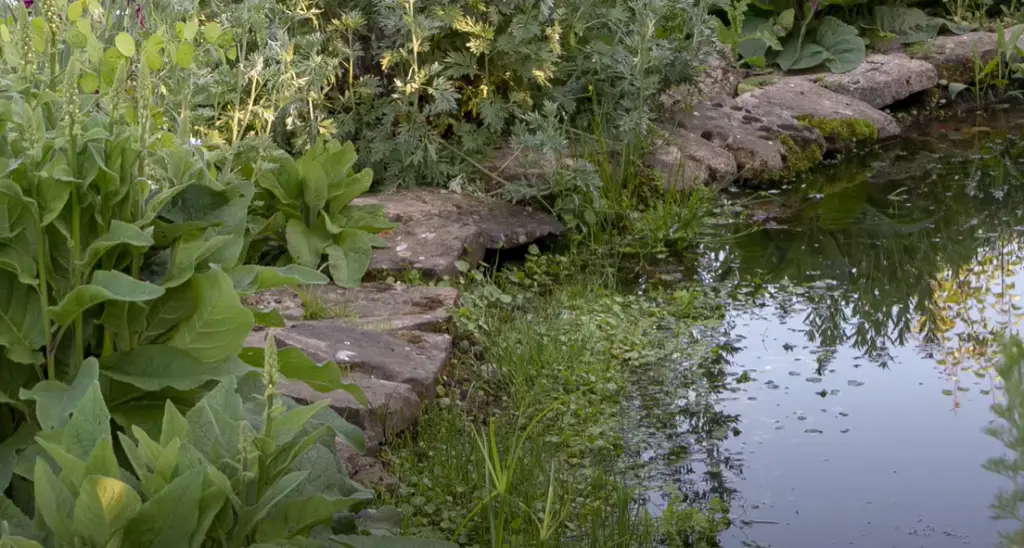
How do you make a simple garden pond?
Making a garden pond is easy and can add a wonderful element to any outdoor space. Here are the steps to making a simple, yet stunning garden pond:
- Choose your location – take into consideration sunlight, access to water, and drainage options.
- Mark out the area you want for your pond using string and stakes or spray paint.
- Dig out the area with a shovel, being mindful of the shape you want for your pond.
- Line the hole with plastic sheeting or butyl rubber liner, making sure no folds are present which could cause leaks later on in time.
- Edge your pond around the outside with rocks or bricks for a neat finish and protection against any damage.
- Add a filter system to the pond for circulating and filtering water, as well as a pump for oxygenation.
- Plant around the edges of your pond with native aquatic plants such as water lilies, reeds, irises, and watercress to bring life to its surroundings.
- Stock it with fish of your choice – be sure to research what types are best suited for outdoor ponds in your area!
- Sit back and enjoy your new garden pond!
Finally, ensure you monitor the health of your pond regularly by testing levels of chemicals and oxygenation, removing debris or algae buildup when necessary, and introducing beneficial bacteria into the water if needed [3].
Where Should a Raised Pond Be Placed?
When it comes to deciding where to put a raised pond, several factors need to be taken into consideration. First, the size and shape of your yard will affect the best location for the pond. You’ll want to choose a spot that is easy to access, as well as large enough for the pond you’re considering installing. Additionally, sunlight exposure should be considered when selecting a location for your raised pond; most species of aquatic life require adequate amounts of direct sunlight to thrive.
The next factor that needs to be taken into account when choosing the location of a raised pond is the ease of maintenance. Make sure you pick an area with plenty of space so that you can easily get around the pond to perform necessary maintenance. You’ll also want to select a spot that is relatively close to an electrical outlet, as most pumps and filtration systems require electricity to operate. Finally, if your raised pond will be visible from inside your home, you may also want to consider the aesthetics of the location when making your selection.
For safety reasons, any raised ponds must be situated away from any areas where children or pets play. Additionally, placing the pond in an area with plenty of shade can help keep temperatures down which is beneficial for aquatic life. By taking all these factors into account when selecting a location for your raised pond, you can ensure that it will thrive and provide years of enjoyment [4].

How to maintain a Raised Pond?
Raised garden ponds can add a beautiful and calming touch to any garden. To make sure your pond is always healthy and looking its best, it is important to properly maintain it. Here are some tips for keeping your raised pond in top condition:
- Keep the Water Clean: The water in a raised pond should be regularly monitored for pH levels, nitrate levels, oxygen content, and clarity. If the water looks murky or has a foul smell, there may be an issue with debris buildup or algae growth that needs to be addressed. Make sure you have the proper filtration system installed to keep the water clean and clear.
- Control Plant Growth: Aquatic plants help create an attractive environment around your raised pond but they can also take over if they are allowed to grow unchecked. Trim excess growth and remove dead plant material from the water regularly.
- Monitor Wildlife: If your raised pond has become home to small animals like frogs, turtles, or fish, you need to keep an eye on their health and well-being. Make sure there is enough food for them and be aware of any potential predators that may pose a threat.
- Test Water Quality Regularly: To make sure your raised pond remains healthy, it is important to test the water quality regularly using a reliable testing kit. This will help you identify any potential issues with the water before they become serious problems.
- Invest in a Cover: A cover helps protect from debris, animals, and other contaminants from getting into your raised pond. If you have a fish pond, it can also help to keep the temperature of the water stable.
- Keep the Surrounding Area Clean: The area surrounding your raised pond should be kept free from debris and potential pollutants such as oil or fertilizer runoff. Regularly clean up any leaves, twigs, or dirt that may find its way into the pond.
- Evaluate Pump Performance: Make sure to check on your pump regularly to make sure it is running smoothly and efficiently. If there is an issue with the pump, it could lead to problems with pH levels and oxygen content in the water which could harm wildlife in your pond.
- Make Repairs as Needed: If you see any structural damage to the pond or its lining, it is important to address this immediately. Make sure all of your repairs are done properly and use high-quality materials to make sure they last.
Following these simple tips can help ensure that your raised pond stays healthy and looks great for years to come. With regular maintenance, you can enjoy the beautiful sight and sound of a garden pond without worrying about its upkeep [5].
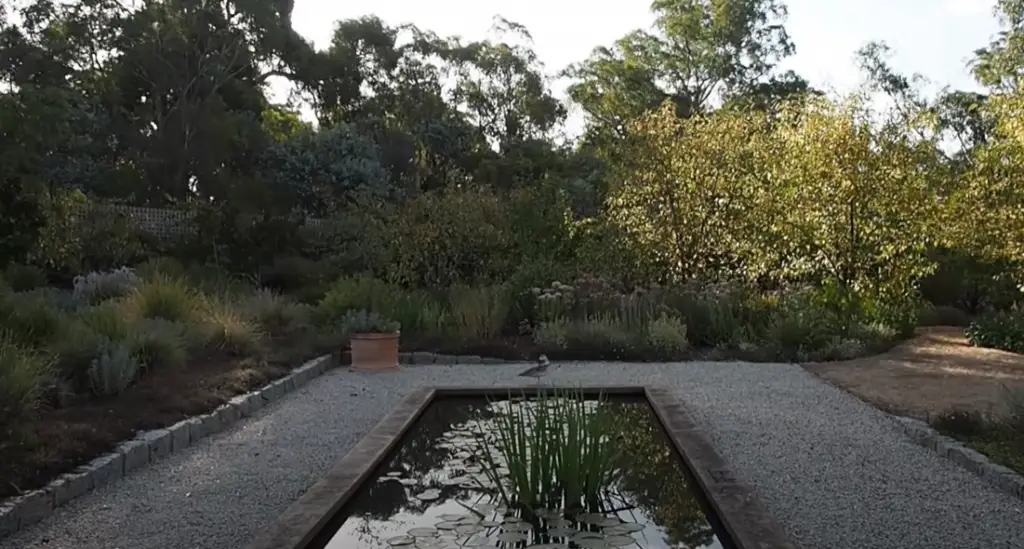
How to decorate a raised garden pond?
Decorating a raised garden pond is a great way to create a unique and beautiful landscape feature. Depending on the size of your pond, there are several different ways you can go about decorating it. Here are some ideas to get you started:
Add plants: Adding plants around the edge of your pond will help soften its look and provide habitats for wildlife such as frogs and insects. Aquatic plants like water lilies and lotus work best, but any type of plant that can tolerate moist soil can be used. Be sure to check with your local nursery or garden center for advice on which plants grow best in your area.
Put in rocks: Rocks add texture and character to a pond’s edges. You can also use them to create a natural-looking waterfall or stream effect.
Install lighting: Installing lighting around your pond will help you enjoy it during the evening hours. Consider using solar or LED lights, as they require no wiring and are much cheaper to run than traditional electric lamps.
Add a fountain: Adding a fountain will add movement and sound to your pond, while also helping to aerate the water and keep it clear of debris. There are many different styles available, so be sure to shop around for something that suits your taste and budget.
These are just a few ideas on how you can decorate your raised garden pond. With some creativity and a little bit of elbow grease, you can transform your pond into a beautiful and inviting landscape feature.
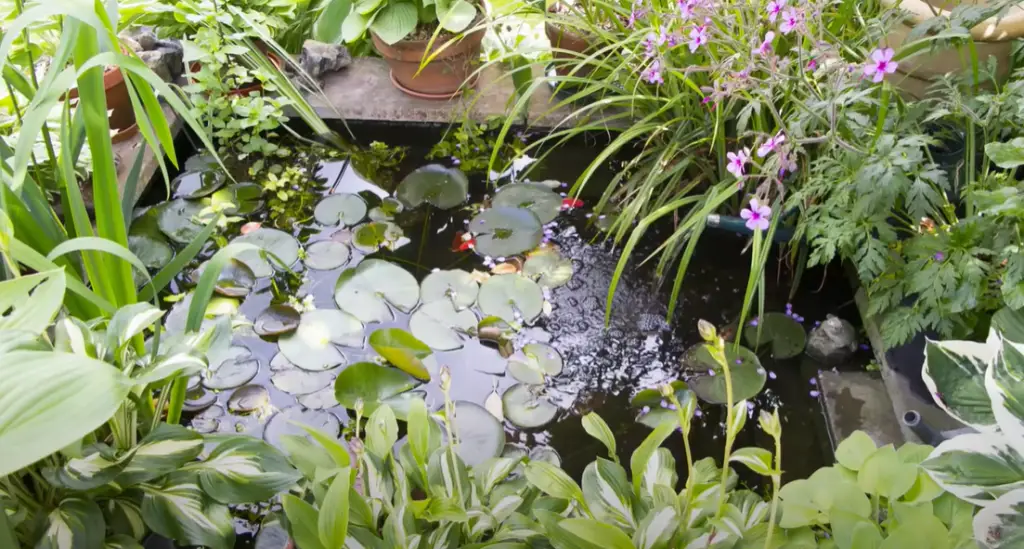
FAQ
How deep should a raised pond be?
A raised pond should generally be at least 18 inches deep. The deeper the pond is, the more options you will have for fish and other aquatic life. Deeper ponds also provide better water circulation, which helps keep your water clean and healthy. Ultimately, it all depends on what kind of fish, plants, or other aquatic life you plan on having in your pond. It’s important to do research before selecting a depth for your pond to ensure the healthiest environment possible.
What type of plants can I put in my pond?
The type of plants you can put in your pond will vary depending on the size, shape, and depth of the pond as well as its location and climate. Some popular choices include cattails (Typha latifolia), water lilies (Nymphaea spp.), floating hearts (Nymphoides peltata), and sweetflag (Acorus calamus). Additionally, you can add a variety of aquatic grasses such as reed canarygrass (Phalaris arundinacea) and bulrush (Scirpus spp.). Before adding any plants to your pond, make sure to research their requirements so they will thrive in the environment.
What type of fish are good for a raised pond?
The best type of fish for a raised pond depends on the size and depth of your pond as well as the climate where you live. Some popular choices include koi carp, goldfish, shubunkins, and comets. Additionally, you can add a variety of other freshwater fish such as sunfish, minnows, and darters. When selecting fish for your pond, make sure to research their requirements so they will thrive in the environment.
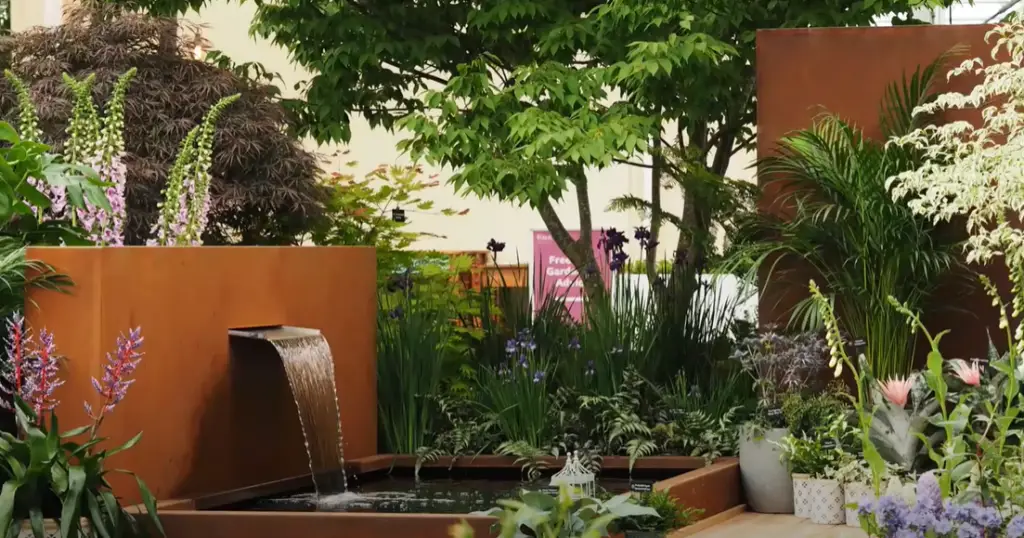
What type of filtration should I use for my raised pond?
The best type of filtration for your raised pond depends on the size and depth of your pond as well as the types of plants and animals living in it. Generally speaking, mechanical filters are used to remove solid particles from the water while biological filters help keep nitrate levels low by breaking down toxic ammonia with beneficial bacteria. If your raised pond has both plants and animals living in it, you may need to combine mechanical and biological filtration for the healthiest environment.
How often should I clean my raised pond?
The frequency of cleaning your raised pond depends on the size, shape, and depth of the pond as well as its location and climate. Generally speaking, it’s important to clean out any debris such as leaves or twigs that accumulate in your pond at least once a month. Additionally, you should check the quality of your water regularly – this includes testing for pH levels, ammonia levels, nitrate levels, chlorine levels, and other contaminants. Regular maintenance is key to keeping your ponds healthy and safe for aquatic life.
What do you put on the bottom of a raised pond?
The type of material you put on the bottom of your raised pond depends on the size, shape, and depth of the pond as well as its location and climate. Generally speaking, a layer of gravel or sand at least three inches deep is best for providing an environment where aquatic life can thrive. Additionally, adding some live plants to the bottom of your pond will help keep it clean by absorbing nitrates and other pollutants. Ultimately, it’s important to do research before selecting a substrate for your pond to ensure the healthiest environment possible.
What can I use as a raised pond?
Raised ponds can be created from almost any material that is waterproof, durable, and safe for aquatic life. Some popular choices include plastic tubs or barrels, concrete, stone, or even pre-formed liners. Additionally, you can use a variety of landscaping materials such as rocks, stones, bricks, or even wood to create the desired shape and size of your pond.
How deep does an above-ground pond need to be?
The depth of an above-ground pond depends on the type of plants and animals that you want to keep in it. Generally speaking, a depth of at least 12 inches is recommended for most types of aquatic life such as fish, frogs, and turtles. Additionally, if you plan to add water lilies or other aquatic plants to your pond, you should make sure the depth is at least 18 inches. Ultimately, research the specific requirements of the plants and animals living in your raised pond before deciding on its size and shape.
Where should a raised pond be placed?
When selecting a location for your raised pond, it’s important to consider the amount of sunlight and shade that it will receive. Generally speaking, ponds should be placed in an area with some sun exposure but also some shade so aquatic life can thrive. Additionally, you should make sure the area is away from direct foot traffic or potential sources of contamination such as chemicals or fertilizers. Overall, choose a spot that offers ideal conditions while still providing aesthetic appeal to your outdoor space.
How do you hide a pond liner in a raised pond?
Hiding a pond liner in a raised pond is relatively easy and can be accomplished with some simple landscaping materials. Generally speaking, you should cover the entire liner with a layer of soil or mulch and then top it off with stones, rocks, gravel, sand, wood chips – whatever material you want to use for aesthetic appeal. Additionally, adding some planting pockets around the outer edges of your pond will help conceal the liner while also providing extra habitat for aquatic wildlife. Ultimately, choose materials that are safe for aquatic life as well as pleasing to the eye.
Should a garden pond be in the sun or shade?
The ideal location for a garden pond depends on the type of plants and animals living in it. Generally speaking, a pond should be placed in an area that receives some sunlight throughout the day but also offers some shade. This will help ensure optimal water temperature as well as provide enough light for photosynthesis to occur. Additionally, having some shade around your pond can also provide shelter for fish and other aquatic life from predators or extreme weather conditions. Ultimately, research the specific requirements of the plants and animals living in your raised pond before deciding on its ideal sun/shade ratio.
Can you make a pond without digging?
Yes, it is possible to make a pond without digging. The easiest way to do this is by using a pre-formed pond liner that can be placed directly on top of the ground. Additionally, you can create a raised pond using materials such as plastic tubs or barrels, stone or concrete blocks, or even wood and then fill it with water. Ultimately, choose the material and design that best suits your needs while also providing an environment where aquatic life can thrive.
What is the simplest form of pond layout?
The simplest form of pond layout is the standard rectangular shape. This type of design can easily be achieved with a pre-formed liner, concrete blocks, or other materials used to construct raised ponds. Additionally, it allows for more flexibility when it comes to adding features such as waterfalls, streams, and islands. Ultimately, an easy-to-maintain and aesthetically pleasing pond can be created by choosing the right materials and taking the time to plan out its shape and size.
What shape is best for a pond?
The shape of a pond should be determined by the type of aquatic life it will contain and the overall aesthetic appeal you are looking for. Generally speaking, oval or circular ponds are best for species such as koi and goldfish because they create gentle currents that fish can swim in. If you want to add features like fountains or waterfalls, rectangular shapes provide more flexibility. Ultimately, research the specific requirements of the plants and animals living in your raised pond before deciding on its ideal shape.
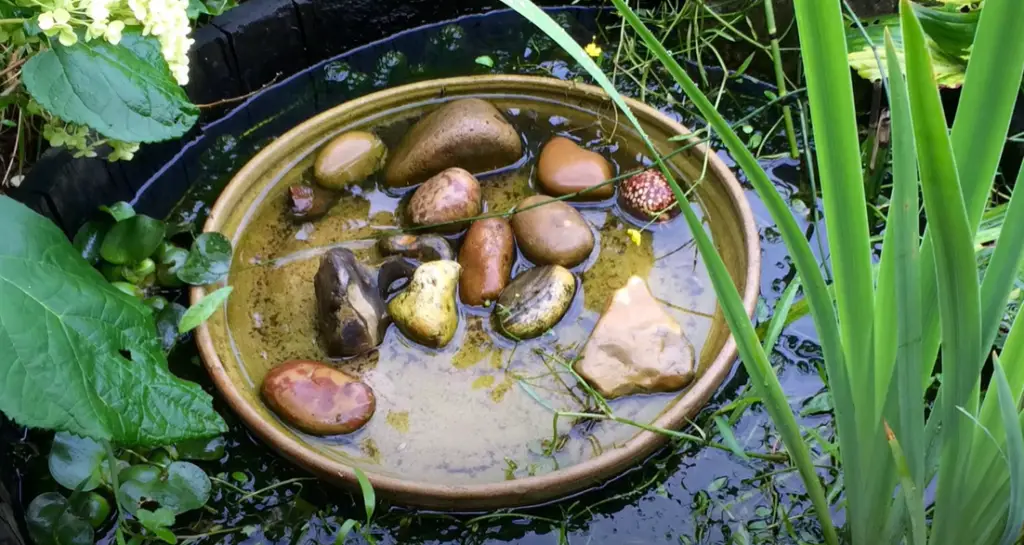
What are the 3 types of ponds?
The three main types of ponds are natural, man-made, and koi ponds. Natural ponds occur naturally in nature but can also be created by humans. Man-made ponds are typically constructed from materials such as concrete or prefabricated pond liners. Koi ponds are specifically designed for keeping koi fish and often feature elaborate water features such as streams and fountains. Ultimately, the type of pond you choose should depend on your needs and preferences while still providing an environment where aquatic life can thrive.
What is the warmest part of a pond?
The warmest part of a pond is typically located near the surface near the shoreline. This area can become very warm due to sunlight and air temperature since water heats up more slowly than air. To help keep your pond cool, consider adding aquatic plants or oxygenating rocks which will absorb some of the heat while also providing additional habitat for fish and other aquatic life. Additionally, consider adding a shady overhanging tree or canopy that can provide shelter from direct sunlight while creating a visually pleasing atmosphere.
What color is best for a pond?
The color of a pond can be determined by both the type of aquatic life that will inhabit it as well as its overall aesthetic appeal. For example, if you are looking to create a koi pond, darker colors such as black or blue can create a more natural-looking environment. On the other hand, lighter colors such as white or tan may be better suited for natural ponds since they reflect light and provide more contrast with the surrounding landscape. Ultimately, research the specific requirements of the plants and animals living in your raised pond before deciding on its ideal color.
Useful Video: How to build a wildlife pond anywhere in your garden
Conclusion
Raised garden ponds are a wonderful way to bring a bit of nature into your garden. Not only do they provide a peaceful and tranquil atmosphere, but they also create habitats for many species of flora and fauna. They can also be great conversation starters when entertaining guests or hosting outdoor gatherings. Though there may be some initial cost and setup time involved in constructing one of these water features, the result is worth it. With proper maintenance and care, raised garden ponds can last for years while providing beauty, relaxation, and enjoyment to all who visit them.
References:
- https://www.quickcrop.ie/blog/raised-garden-ponds
- https://www.idealhome.co.uk/garden/garden-ideas/garden-pond-ideas-306832
- https://empressofdirt.net/build-a-pond-in-a-raised-bed/
- https://www.watergardenadvice.com/best-location-garden-pond/
- https://www.quickcrop.co.uk/blog/maintaining-garden-pond










Leave a Reply
View Comments